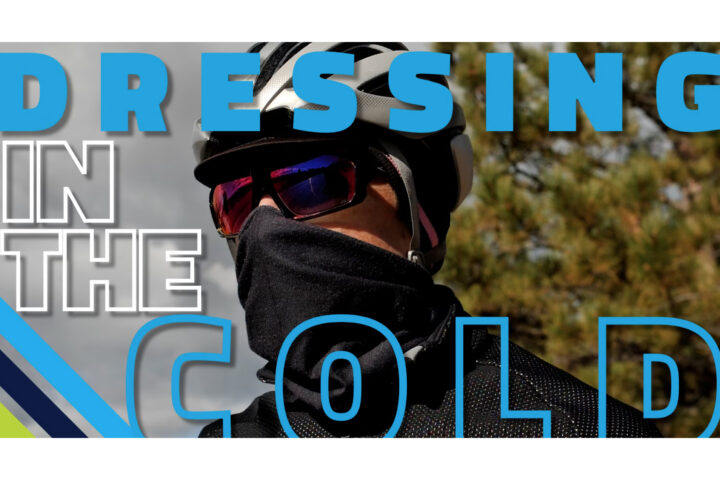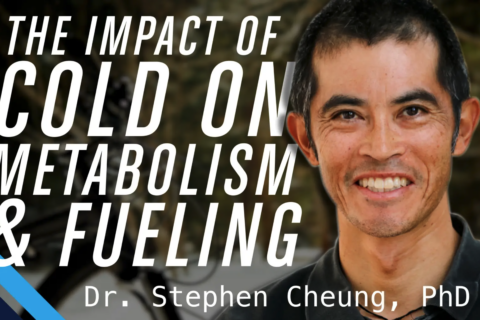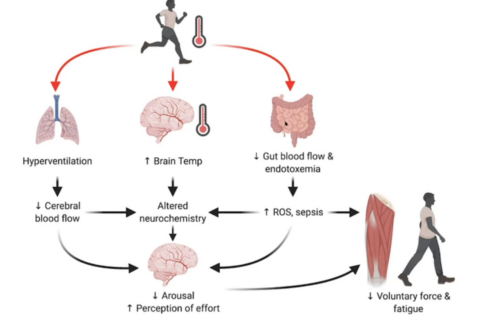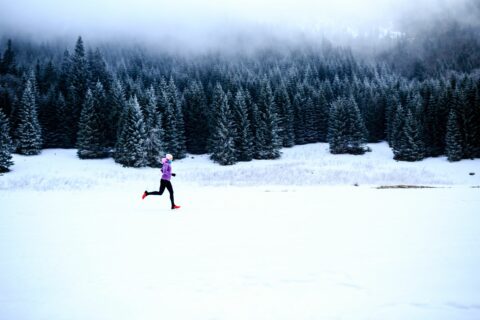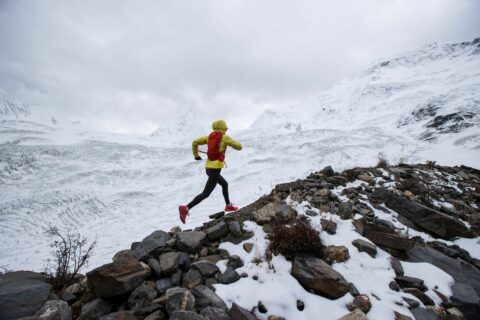Coach Connor offers his explanation for why you should overdress, rather than underdress, during cold-weather rides.
Video Transcript
Trevor Connor 00:00
Okay, you’ve heard me say this a million times, I know this is a bit of my soapbox. But today, I am going to explain to you why it is so important to make sure you never underdress on the bike.
Chris Case 00:20
Welcome to Fast talk Laboratories, your source for the science of endurance performance.
Trevor Connor 00:31
So here’s the important thing to remember, when you are overdressed, you’re just a little bit uncomfortable. When you’re underdressed, you’re still going to be uncomfortable, but now you’re doing damage and you’re hurting your training. So my question to you is, which is more important to you?
What Happens If You Underdress?
Trevor Connor 00:49
So why is it so important not to underdress? In our muscles, we have what are called cross bridges, so these are these actomyosin fibers. And what they do when your muscle contracts, is they grab one another and pull closer, grab again, pull closer. Now what’s really neat about this is that contracted state where they’re bound, that’s actually your low energy state. When you use energy to work your muscles, you’re actually using that energy to get them to release. So here’s why that’s important for cold weather. In cold weather, you can’t use energy as effectively, this is called the q 10. effect. So if you can’t use that energy as effectively, those actomyosin bonds aren’t going to release as easily, which means your legs still go on through that pedal stroke, you’re now going to have this forceful lengthening of your muscle and it’s still contracted, and that’s going to cause tearing, that’s going to cause damage to your muscles. And that’s the sort of damage you don’t want. That’s going to hurt training, that’s going to require more recovery.
Do Not Be Afraid To Sweat
Trevor Connor 01:54
You are going to sweat a little bit, you are training. Sweating is part of what’s going to happen. But here’s the thing, if you sweat and you’re still dressed correctly, it’s going to be a little bit uncomfortable, but it’s not going to get cold. That’s it everybody worries about well, my sweat is gonna freeze and then I’m going to get really cold. Yes, you’re a little uncomfortable when you’re sweating, but the thing that’s far worse than that is being underdressed, and really cold. By the way, if you’re still not convinced, go to any World Tour team website and look at pictures from the winter training camps. Every pro I know, every pro I’ve seen they dress up like the Michelin Man. They get this. They’re out doing six-hour rides in the cold, and they have every layer on booties legs fully covered. They don’t mind sweating a bit because they know it happens if they’re underdressed.
Why Do You Need To Cover Your legs?
Trevor Connor 02:47
So the other common question I get is my legs just don’t feel cold, So why should I cover them up? This isn’t about feel. We have different densities of what are called thermal receptors throughout our bodies, and one of the lowest densities is in our legs. So it’s not that your legs aren’t cold, you just don’t feel it because you don’t have the receptors there. So I see this all the time with cyclists they have arm warmers on, everything else covered, but their legs uncovered, and they go, well, my legs can handle it. All of us can handle it, all of us can go out below freezing, with our legs exposed, and you’re not going to feel too much because the thermoreceptors aren’t there. But you can’t trust that feel because your muscles are getting cold, you’re doing that damage, you’re just not aware of it. So I have some guidelines I can give to you that I tell all my athletes, first of all, trust the parts of your bodies that do have a lot of thermoreceptors. So if it is cold enough for you to go out with arm warmers on, you need knee warmers on. If it’s arm warmers and gloves should really be thinking about leg warmers. The general guidelines that pros follow- and you’ll be surprised by this- is below about 65-70 degrees wear knee warmers, below about 55 degrees wear leg warmers.
Are Good Gloves Enough?
Trevor Connor 04:04
So the answer is yes and no. Yes, you have the most thermal receptors in your hands and feet. So you’re going to feel it they’re the most, you also lose the most heat through your feet, hands, and head. So it’s really important to keep them covered so you’re not losing heat. So the important thing to remember here is it’s all about blood flow dynamics, we use blood to heat up our body. And what’s most important to our body is keeping our organs warm. So if you don’t have your core covered up, your body is going to keep all the blood sequestered there to make sure your organs are kept at body temperature and is not going to push blood out to the extremities because it doesn’t have enough blood and then because also you’re going to lose heat. So it doesn’t matter if you’re wearing gloves and good shoes. If the core is not warm blood is going to stay there, no heat is going to get to your hands and to your feet for those gloves and booties to trap in.
Trevor Connor 04:56
Alright, you’ve heard what I have to say, you know this is my soapbox. I want to see all of you dressing warmly when it is cold outside. But please come check out our cold weather pathway at fasttalklabs.com. You’re not going to get just my opinion. You’re going to hear from some of the top experts in the world like Dr. Stephen Cheung, about how to dress in the cold. Hear what they have to say about exercising in cold weather.

